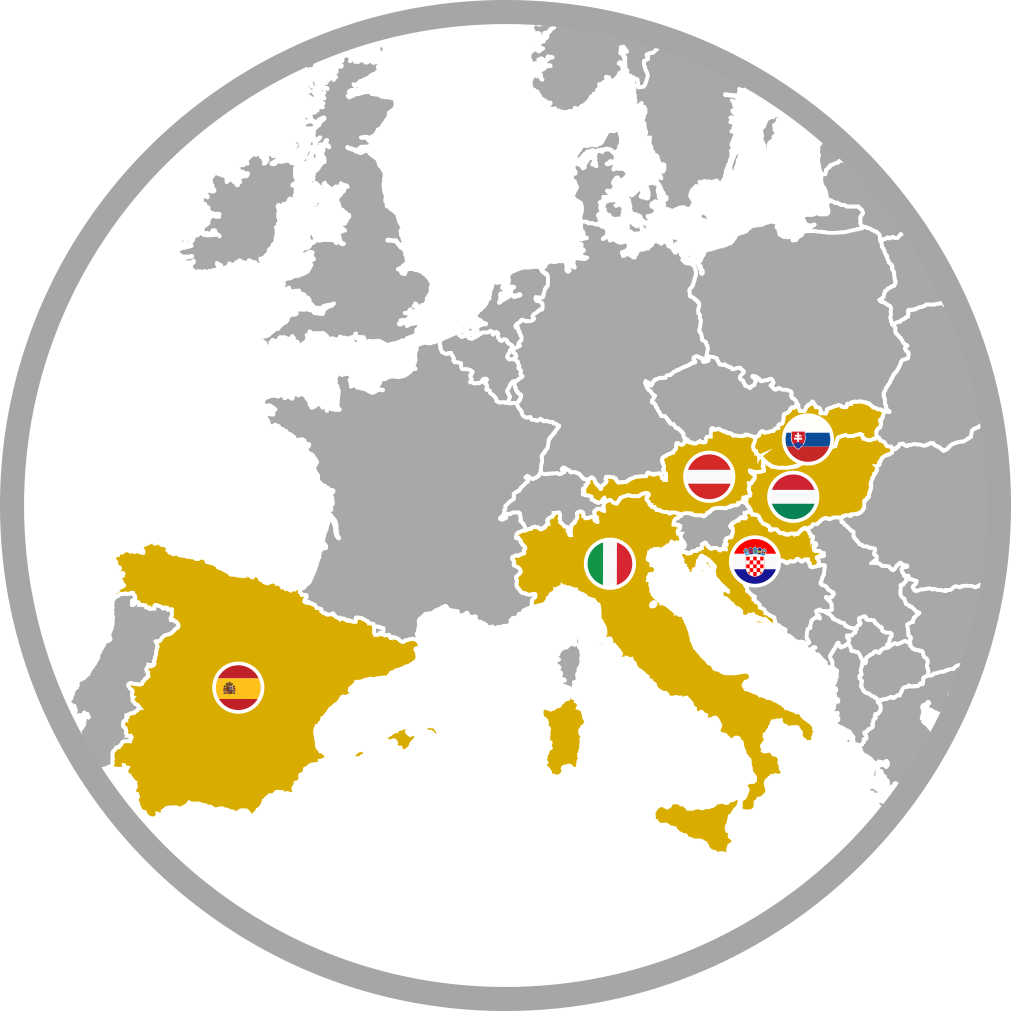The history of wine growing in Argentina dates back to the times of Spanish colonization when the first vines were brought to the country by Juan Cedrón in 1557. Argentina has 210 thousand hectares of vineyards and the Mendoza wine area is the greatest wine growing and production contributor.
Until the end of the 20th century, nearly all Argentinian wines were only meant for domestic consumption. In recent years, the quality of Argentinian wines has increased rapidly and today, Argentina ranks among the leaders in the international wine market. Ideal temperatures, long and sunny days, low rainfall, humidity and strong winds, together with the subsoil, create perfect conditions for growing high-quality raw materials, therefore a number of varieties flourish here.
Malbec is the most famous and most typical of Argentinian wine making, producing dark, beautiful, full and complex wines. Other popular red wine varieties are Bonarda, Cabernet Sauvignon and Merlot, among others, with the predominant white varieties including Chardonnay, Chenin Blanc and Sauvignon Blanc.
CABERNET SAUVIGNON
Ripe grapes of this variety always produce a blackcurrant taste. Typical CS has a dark, deep red colour and its richness increases by maturing. It is full-bodied, with a tannin structure that requires longer maturing in the bottle, becoming smooth and nicely rounded. The aroma is distinctly blackcurrant-like, the taste is robust with a long lasting impression, spicy, strongly tannin in young wines, smooth and velvety in mature wines. In the aroma and taste, we can find black currant, cherries, blackberries, as well as green pepper, olives and violets. It goes well with meat dishes, especially lamb, turkey and game.
CHARDONNAY
Chardonnay from hot regions acquires tropical tones, mostly of mango, banana, pineapple, peach and melon, sometimes cream, honey and caramel. These perceptions are then confirmed in the taste, which is also dominated by a full creamy and buttery feeling on the palate. The best wines have well-balanced acidity and thick to oily consistency with a buttery finish. In gastronomy, the wines may be combined with fish, seafood, white meat and pasta; they go well with soft white mould cheeses, pâtés and white sauces. It is a great accompaniment to thick soups, white meat dishes and cream sauces.
MALBEC
The Malbec variety originates in France, where it has also been traditionally grown; however, the largest vineyards with this variety are found in Argentina nowadays. Varietal wines from ripe grapes are mild but striking, rich in tannins. A typical wine has a dark red colour with a purple tinge and a fruity bouquet resembling blackcurrant, mulberries, raspberries, cherries, jasmine and dark chocolate. In the taste, we find fruity and spicy tones. You can serve the wines with savorous beef dishes and grilled specialities, they will also go nicely with blue cheeses.
MERLOT
A typical Merlot has a ruby to dark, deep red colour. The aroma is mild, with tones of overripe blackcurrant. In the taste, low acid content is noticeable; it is full, smooth, supple and long. In the aroma and taste, we can look for black cherries, plums, blackberries, canned fruit, rigs or roses. As it matures, Merlot acquires a creamy-vanilla tone. Merlot wines may be drunk on their own, without the accompaniment of food, or they are served with various mild pâtés, venison ragout, dishes with prominent tomato taste or Emmental.
PINOT GRIS
Pinot Gris wines are expected to be full, smooth, have a high extract, orange tones in the aroma combined with impressions of honey and slight breadness. A characteristic Pinot Gris has a golden-yellow colour, sometimes with a tone of pink, a neutral aroma with fruit tones; the taste is full, smooth, with a high extract, higher glycerol and alcohol content. The wine is harmonious, supple, with dulled acid activity, the aftertaste is long. In the aroma and taste, we can look for orange, grapefruit, apricots, nuts and honey, smoke and butter tones, spices, flowers, fool's parsley, as well as cocoa, vanilla and beeswax.
SAUVIGNON
The Sauvignon variety grapes contain highly aromatic substances that give tones smelling of nettle and blackcurrant at the beginning, and turn to the scent of ripe peaches as they mature. A typical Sauvignon is light green-yellow, intensely aromatic, spicy, with a more prominent acid and higher alcohol content. In the aroma and taste, we can look for blackcurrant, gooseberry, nettle and kiwi with a hint of lemon, grapefruit and peaches. These distinctly aromatic and dry wines are suitable as an aperitif or with cold starters, asparagus and goat cheeses.
GEWÜRZTRAMINER
Traminer has an intensive golden-yellow colour with bright golden reflections. It usually has a higher alcohol and glycerol content, when circled in a glass, it leaves noticeable arches (bridges). The taste is heavy, full, very spicy, extractive, with lower acidity and dominating “perfume” aroma. In the aroma and taste, we can also recognize honey, raisins, canned fruit, as well as flowers of violets, peony, ginger or cinnamon. It is often offered to accompany starters, goose liver pâtés in particular. Sweeter selections go well with blue cheeses as well as sheep and goat cheeses at the end of dining.




